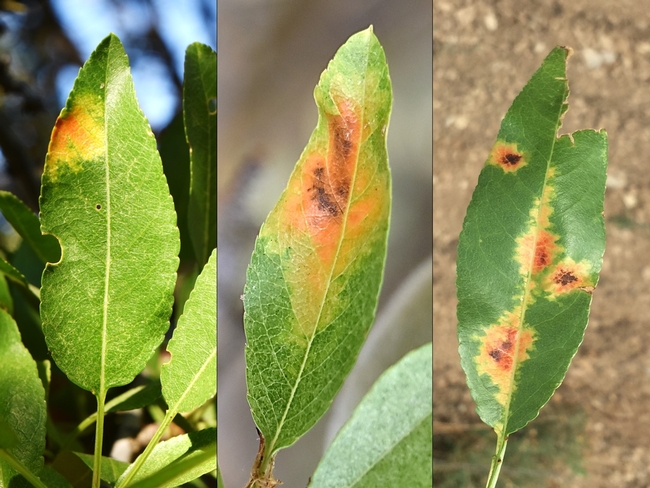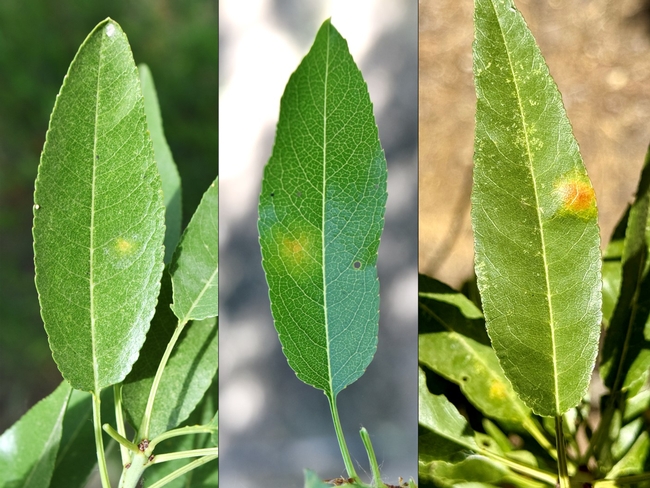
Posts Tagged: red
Yes, Hawks Eat Insects
Ever watched a red-shouldered hawk on a hunt? They eat a variety of prey, including small...

Red-shouldered hawk devouring what appears to be a praying mantis. It caught the insect in the Vacaville Museum and then perched on a telephone line to eat it. (Photo by Kathy Keatley Garvey)

UC Davis distinguished professor emerita Diane Ullman of the Department of Entomology and Nematology and Gale Okumura, Department of Design faculty emerita, in front of "A Bird's Eye View." (Photo by Kathy Keatley Garvey)
Almond crop yields threatened by disease new to California
Detection of fungus causing red leaf blotch spurs call for grower vigilance
Symptoms of red leaf blotch (RLB), a plant disease caused by the fungus Polystigma amygdalinum, have been observed for the first time in California across the Northern San Joaquin Valley.
Molecular DNA testing by the laboratory of Florent Trouillas, University of California Cooperative Extension fruit and nut crop pathology specialist, has detected P. amygdalinum. Pest identification was confirmed by the California Department of Food and Agriculture and U.S. Department of Agriculture.
The disease, named for the characteristic orange-to-dark red blotches that appear on infected leaves, is typically nonlethal for trees but has been a long-standing problem for almond-growing regions across the Mediterranean. Causing trees to lose their leaves prematurely, the fungal pathogen can significantly diminish crop yields in the current year and the next.
“It is one of the most severe diseases of almonds for Spain and the Middle East,” said Trouillas, an associate professor in the UC Davis Department of Plant Pathology. He recently co-authored an explanatory article on the UCCE San Joaquin Valley Trees and Vines blog.
With symptomatic trees seen in multiple orchards across Madera, Merced, San Joaquin and Stanislaus counties, Trouillas said RLB is already “somewhat widespread.”
“From the first observations so far, it seems like it affects some of the most-planted cultivars, like Nonpareil and Monterey,” he added. “We've observed it in a diversity of cultivars already.”
UC Cooperative Extension specialist urges taking preventive measures
According to Trouillas, RLB caused by P. amygdalinum is “highly specific” to almond trees, and generally only affects their leaves. Infection typically happens at petal fall, when small leaflets are first emerging and most susceptible to disease. After the pathogen's latent period of about 35 to 40 days, the first symptoms appear – small, pale-yellow spots on both sides of the leaves.
Those blotches become yellow-orange and then reddish-brown in the advanced stages of the disease during June and July. Now, with RLB symptoms becoming more prominent, Trouillas and UC Cooperative Extension advisors across the Central Valley have seen an uptick in calls.
“PCAs [pest control advisers] have been confused because they've never seen anything like this,” said Trouillas, noting that the yellow-orange-red blotches are symptoms unique to RLB and cannot be confused with other known almond diseases.
Applying fungicides after RLB symptoms appear is ineffective, Trouillas said. The best thing growers can do at this point is to report symptomatic trees to researchers so they can track the prevalence and distribution of the disease.
Growers who see signs of this new disease in their orchard should contact their local UC Cooperative Extension farm advisor.
Preventive measures are the best way to manage RLB, Trouillas said. He urges concerned growers to think ahead to next winter/spring and plan for fungicide applications at petal fall and – if rains persist – also at two weeks and five weeks after petal fall. Fortunately, those are the same three key timings for managing other diseases, like shot hole and almond anthracnose.
“Because RLB is something that is introduced and potentially aggressive, it will be important for growers to keep that in mind next year and be on schedule for next year's spraying program,” Trouillas said.
Additional information on RLB can be found at https://www.sjvtandv.com/blog/first-detection-of-red-leaf-blotch-a-new-disease-of-almond-in-california.
Admiring the Red Admiral
One of the first butterflies we see in the UC Davis Arboretum and Public Garden in midwinter is the...
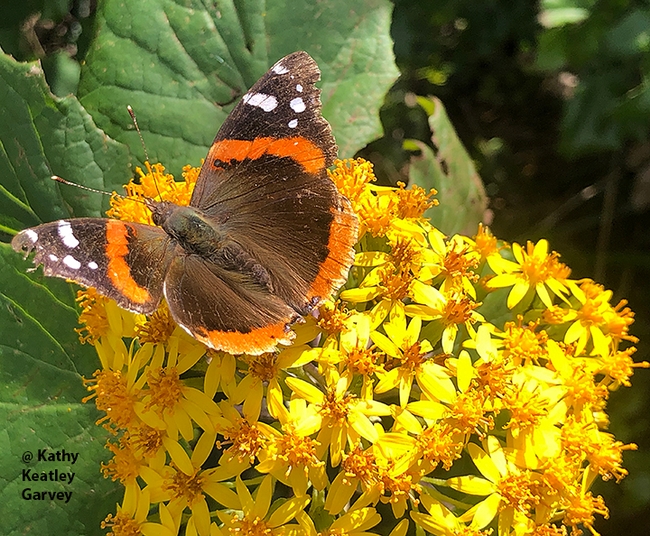
A Red Admiral, Vanessa atalanta, spreads its wings on a Roldana aschenborniana (Golden Light Senecio) on March 9 in the UC Davis Arboretum and Public Garden. (Photo by Kathy Keatley Garvey)
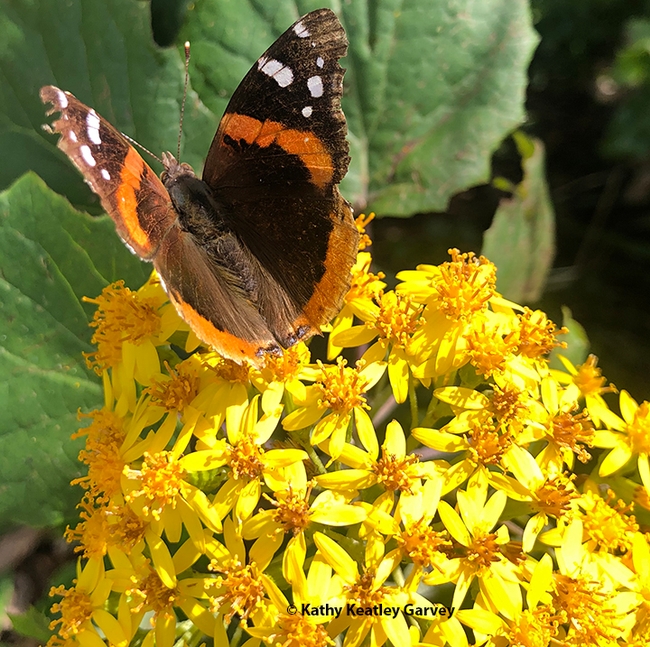
The Red Admiral prepares to take flight over a Roldana aschenborniana (Golden Light Senecio) in the Storer Garden, UC Davis Arboretum and Public Garden. (Photo by Kathy Keatley Garvey)
Packing the Red Pollen
Ever seen a honey bee packing red pollen? Rock purslane (Calandrinia grandiflora) is...
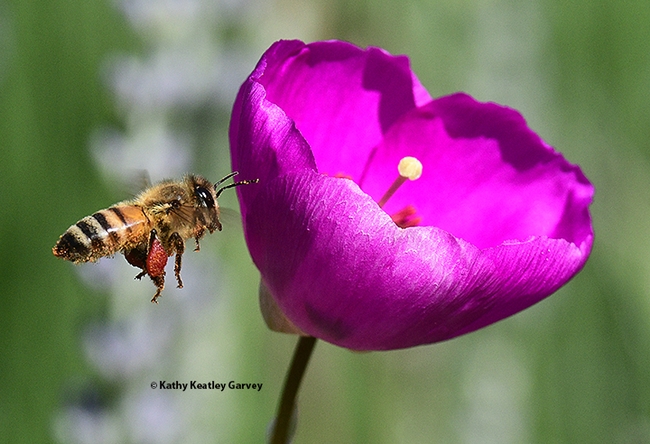
A honey bee packing red pollen as she visits another rock purslane blossom. (Photo by Kathy Keatley Garvey)
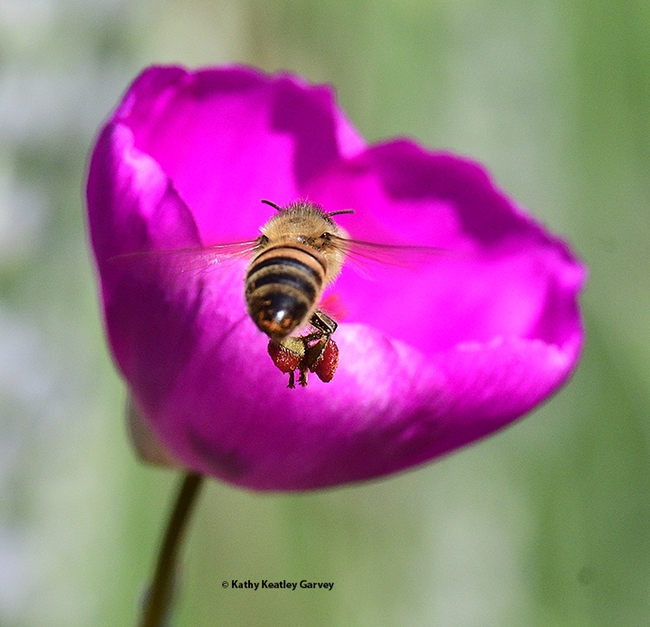
A little adjustment of her pollen load and the honey bee reaches a rock purslane blossom. (Photo by Kathy Keatley Garvey)
'A Lady in Red': Petal Pusher?
It wouldn't make the news, even if it were a "Slow News Day." "Lady in Red Climbs Neon-Pink Petals...
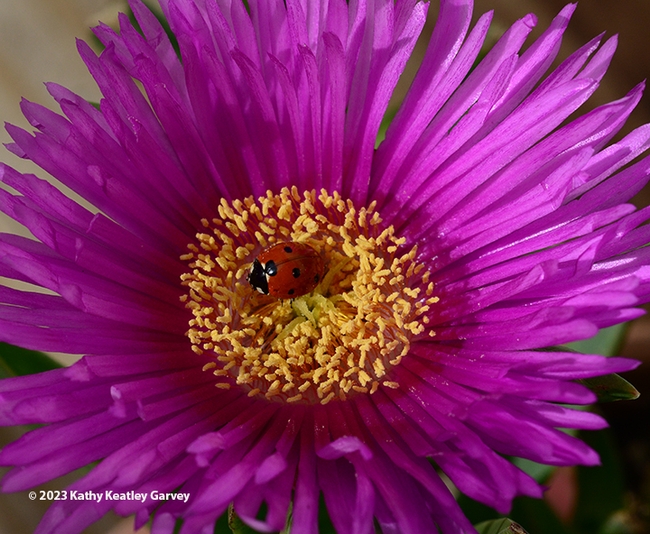
A lady beetle nestled in an ice plant blossom. (Photo by Kathy Keatley Garvey)
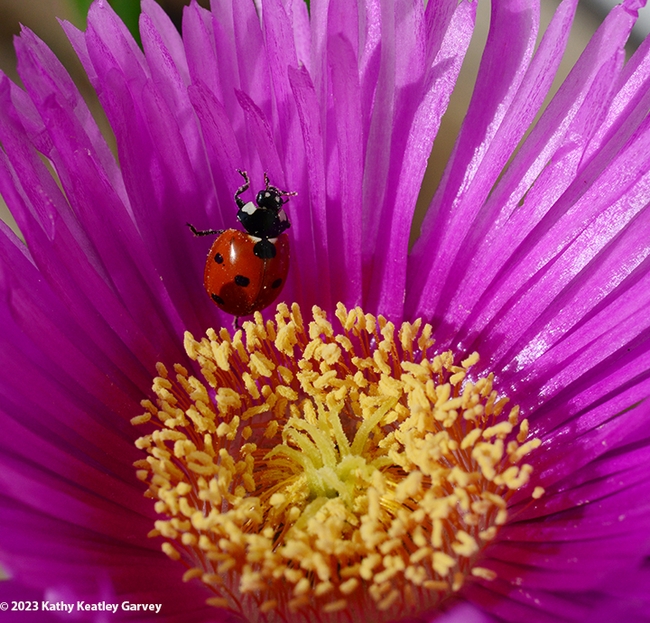
Let's climb! A lady beetle begins her ascent--up an ice plant blossom. (Photo by Kathy Keatley Garvey)
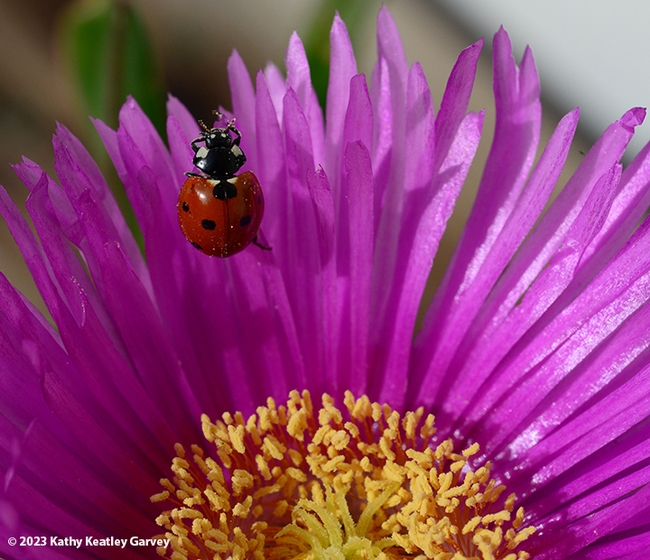
How am I doing? Am I doing this right? Lady beetle stops. (Photo by Kathy Keatley Garvey)
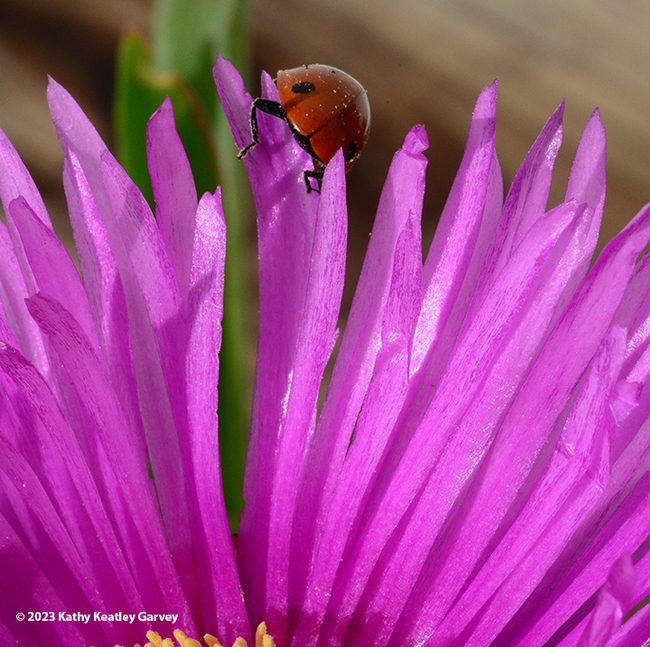
I did it! I climbed my Mount Everest and I'm about to descend. (Photo by Kathy Keatley Garvey)

